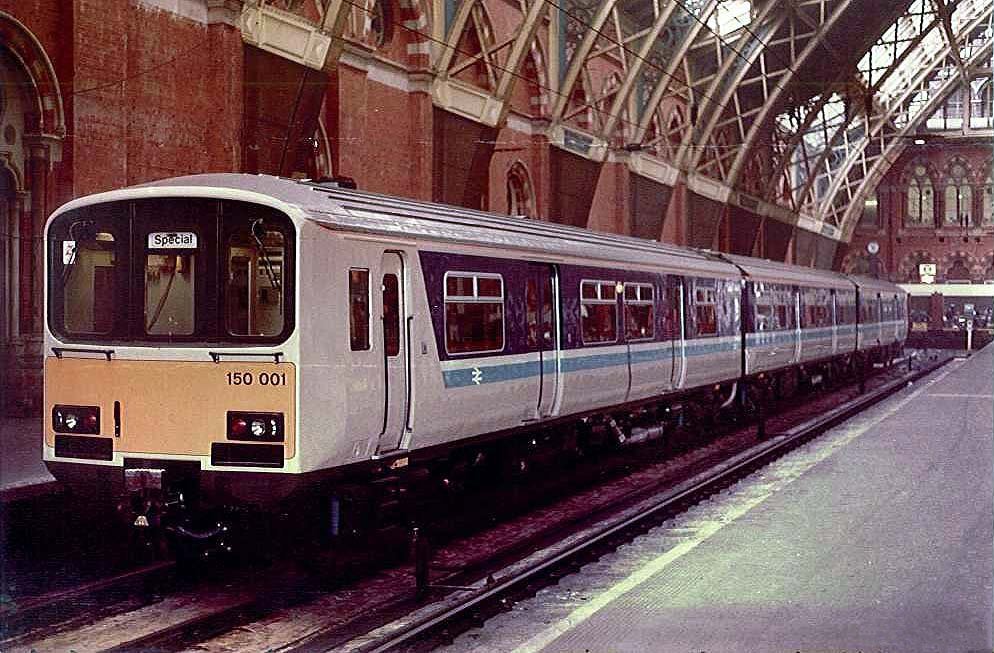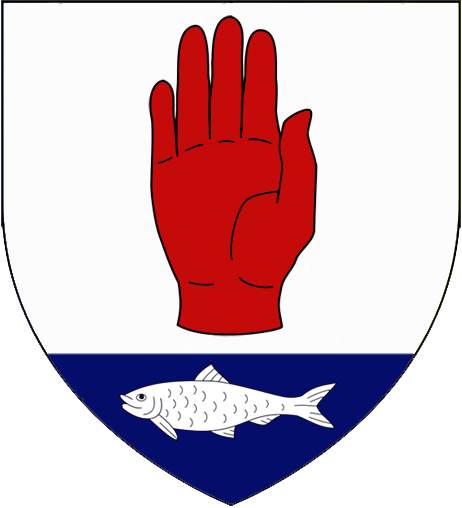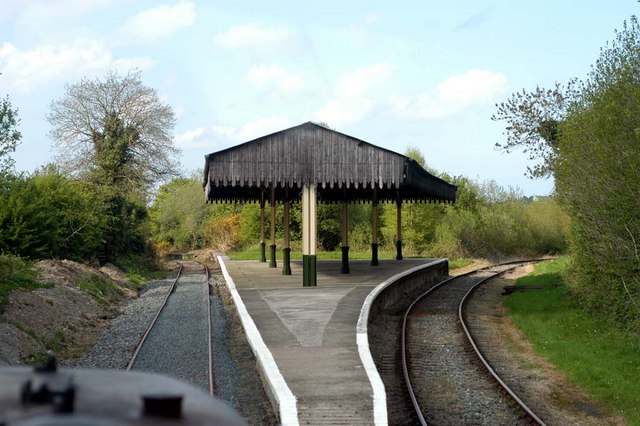|
NIR 450 Class
The 450 Class is a type of diesel multiple unit (DMU) passenger train formerly used by Northern Ireland Railways. They were affectionately nicknamed 'Thumpers' and 'Castles' (also known as the Castle Class) by rail enthusiasts. History In the mid-1980s, Northern Ireland Railways was in the process of upgrading its rolling stock. Having already purchased three new locomotives, it then proceeded to purchase replacements for its 70 Class diesel multiple units. A total of nine three car trains were constructed by British Rail Engineering Limited between 1985 and 1987 intended to supplement the existing 80 Class DMUs then in service. The trains were constructed using underframes of existing Mark 1 coaching stock, altered to and new Mark 3 bodyshells. Because of this, they bore a strong resemblance to the British Rail Class 150, British Rail Class 210, British Rail Class 317, British Rail Class 318 and British Rail Class 455, as they use Mark 3 bodyshells. These were combined w ... [...More Info...] [...Related Items...] OR: [Wikipedia] [Google] [Baidu] |
British Rail Engineering Limited
British Rail Engineering Limited (BREL) was the railway systems engineering subsidiary of British Rail. Established in 1970, the maintenance arm was split as British Rail Maintenance Limited in 1987, and the design and building of trains was privatised in 1989, purchased by the Swiss-Swedish conglomerate Asea Brown Boveri (40%), Trafalgar House (40%), and a management-employee buy-out (20%). After ABB became the sole shareholder in September 1992, it was subsumed into ABB Transportation. History BREL was established by the British Railways Board on 1 January 1970 to take over the management of its 14 rolling stock maintenance centres, including Ashford, Crewe, Derby Litchurch Lane, Derby Locomotive, Doncaster, Eastleigh, Glasgow, Horwich, Shildon, Swindon, Wolverton, and York. Ashford Works closed in 1981, Shildon in 1984, and Swindon in 1986. In 1987, Doncaster, Eastleigh, Glasgow, and Wolverton were transferred to BR Maintenance. Not all British Rail rolling stock wa ... [...More Info...] [...Related Items...] OR: [Wikipedia] [Google] [Baidu] |
British Rail Class 150
The British Rail Class 150 ''Sprinter'' is a class of diesel multiple unit passenger trains; they were developed and constructed by BREL York between 1984 and 1987 for use on regional services across the UK. The type is a second-generation design, built to more modern standards and based on BR's Mark 3 body design for longer-distance services. It was developed alongside the lower-cost ''Pacers'', which were built using bus parts, for use on short-distance services. Two prototype units were built, followed by 135 production units in two batches. Subsequently, further members of the Sprinter family were also developed and introduced to service, including the Class 155, Class 156, Class 158 and Class 159. Background By the beginning of the 1980s, British Rail (BR) was operating a large fleet of first-generation DMUs of various designs. While formulating its long-term strategy for this sector of its operations, BR planners recognised that there would be considerable costs ... [...More Info...] [...Related Items...] OR: [Wikipedia] [Google] [Baidu] |
Olderfleet Castle
Olderfleet Castle is a four-storey towerhouse, the remains of which stand on Curran Point to the south of Larne Harbour in Larne, County Antrim, Northern Ireland. The place name of Olderfleet may be a corruption of ''Ulfrecksfiord'' (or Ulfried's Fjord), the Viking name for Larne Lough. Olderfleet Castle is a State Care Historic Monument in the townland of Curran and Drumaliss, in the former Larne Borough Council area, at grid ref: D4133 0166. History The original towerhouse was possibly built by the Scoto-Irish Bissett family of Glenarm around 1250, although these remains are actually thought to be those of Curran Castle, a towerhouse built in the sixteenth century. On a 1610 map it was called Coraine Castle. In 1315 Edward Bruce landed here with his 6000 strong army en route to conquer Ireland, with a welcome from the Bissetts. Queen Elizabeth I considered the castle of such strategic importance that it was seized for the crown and Sir Moyses Hill appointed its governor in ... [...More Info...] [...Related Items...] OR: [Wikipedia] [Google] [Baidu] |
Belfast Castle
Belfast Castle (Irish: ''Caisleán Bhéal Feirste''Ireland Highlights: Belfast Castle. https://www.irelandhighlights.com/info/belfast-castle/ ) is a mansion located in Cave Hill Country Park in Belfast, Northern Ireland, in a prominent position above sea level. Its location provides unobstructed views over the City of Belfast and Belfast Lough.Discover Northern Ireland: Belfast Castle Estate. https://discovernorthernireland.com/things-to-do/belfast-castle-estate-p676051 There have been several different structures called 'Belfast Castle' over the centuries, located on different sites. 'Belfast: The hidden castles under the city's shops' (BBC Northern Ireland, 28 August 2022). https://www.bbc.com/news/uk-northern-ireland-62167256 The current 'castle' is a Victorian structure, built between 1867 and 1870 on the slopes of Cave Hill, and is listed as being Grade B+. C.E.B. Brett, ''Buildings of Belfast, 1700-1914'', p. 46. Friar's Bush Press, Belfast, 1985 (paperback, revised edit ... [...More Info...] [...Related Items...] OR: [Wikipedia] [Google] [Baidu] |
Downpatrick And County Down Railway
The Downpatrick and County Down Railway (DCDR) is a five-foot, three-inch (1,600 mm) gauge heritage railway in County Down, Northern Ireland. It is operated by volunteers and runs passenger trains using steam and diesel locomotives, diesel railcars, and vintage carriages. The railway has approximately three miles (4.8 km) of track in a triangular-shaped layout, which connects the town of Downpatrick with the historical sites of Inch Abbey to the north and King Magnus’ Grave to the south. It also houses a museum of railway artefacts and rolling stock originating from both Northern Ireland and the Republic of Ireland, dating from the 1860s to the 1980s. The DCDR’s development was spearheaded by a group of local railway enthusiasts in the early 1980s, and work started on building the railway in 1985. Most of its track is on part of the now-closed Belfast and County Down Railway (BCDR) mainline which ran between Belfast, Downpatrick, and Newcastle. The heritage ra ... [...More Info...] [...Related Items...] OR: [Wikipedia] [Google] [Baidu] |
NIR Class 4000
The Class 4000 is a type of diesel multiple unit in service with NI Railways. History The fleet covers 20 DMUs procured by Translink. None of the Northern Irish rail network is electrified, and diesel multiple units have been used since nationalisation in the 1950s. Prior to 2000, the NIR rolling stock consisted of a mixture of diesel multiple unit types that had entered service between 15 and 25 years previously. The main type was the Class 80, based on the Mark 2b bodyshell, 22 3-car and 4-car units built in two batches between 1973 and 1979. Additional capacity was provided with the Class 450, nine 3-car units that entered service in 1985 based on the Mark 3 bodyshell. Chronic underinvestment in the railway meant that by the millennium these were the newest domestic trains. By 2000 it was estimated that the network required investment of £183 million to bring it up to basic safety standards. New trains Recognising that the railways serve an important role in the gro ... [...More Info...] [...Related Items...] OR: [Wikipedia] [Google] [Baidu] |
NIR Class 3000
The Class 3000 (C3K class) is a class of diesel multiple unit in service with NI Railways. History At the beginning of the 21st century, the majority of rail services in Northern Ireland continued to be operated using NIR Class 80, Class 80 DEMUs, which had been in service since the mid-1970s, and were becoming increasingly harder to maintain. NIR had not procured new rolling stock since 1994, when, in conjunction with Iarnród Éireann, it purchased locomotives and coaches for the Enterprise (train service), Enterprise service. As part of a major investment programme in the railways in Northern Ireland, NIR placed an order totalling £80 million, the largest single investment in rolling stock ever made by NIR, with Construcciones y Auxiliar de Ferrocarriles, CAF for 23 3-car DMUs in 2002. The new trains entered service in 2004 and 2005, gradually replacing most of the existing Class 80 units on the network (the main exception being services between Belfast and Larne, which we ... [...More Info...] [...Related Items...] OR: [Wikipedia] [Google] [Baidu] |
Translink (Northern Ireland)
Translink is the brand name of the Northern Ireland Transport Holding Company (NITHCo), a public corporation in Northern Ireland which provides the public transport in the region. NI Railways, Ulsterbus and Metro are all part of Translink. It is led by CEO Chris Conway. Translink provides services all over Northern Ireland and also to Dublin, in a partnership deal with its counterpart in the Republic of Ireland. It also provides local bus services in many towns and cities all over Northern Ireland including Bangor, Derry, Ballymena, Omagh, Craigavon and Antrim. The Metro service operates throughout Belfast, right out to the suburbs. NITHCo was established in 1967 to take over the railway and bus services of the Ulster Transport Authority (UTA), namely Northern Ireland Railways (NIR) and Ulsterbus. In 1996 the Translink organization was created to integrate the services of the Ulster Transport Authority as well as Citybus Limited (Belfast only – successor to the Belfast ... [...More Info...] [...Related Items...] OR: [Wikipedia] [Google] [Baidu] |
Rail Transport In Great Britain
The railway system in Great Britain is the oldest railway system in the world. The first locomotive-hauled public railway opened in 1825, which was followed by an era of rapid expansion. Most of the track is managed by Network Rail, which in 2017 had a network of of standard-gauge lines, of which were electrified. These lines range from single to quadruple track or more. In addition, some cities have separate metro, light rail and tram systems (including the extensive and historic London Underground). There are also many private railways (some of them narrow-gauge), which are primarily short lines for tourists. The main rail network is connected with that of continental Europe by the Channel Tunnel and High Speed 1 (originally the Channel Tunnel Rail Link), which fully opened in 1994 and 2007 respectively. In 2019, there were 1.738 billion journeys on the National Rail network, making the British network the fifth most used in the world (Great Britain ranks 23rd in ... [...More Info...] [...Related Items...] OR: [Wikipedia] [Google] [Baidu] |
Dargan Bridge, Belfast
Dargan Bridge, built in the 1990s, is a railway bridge in Belfast, Northern Ireland. This bridge spans the River Lagan and connects the railway lines to Larne and Derry (via Bleach Green) to those east Bangor and south to Newry and the Republic. It runs mostly parallel to the ''Lagan Bridge'' (opened 1995) carrying the M3 motorway across the Lagan. One of the first people to cross it was Mr John Johnston, the first Station Manager of Belfast Central Station and his grandson James Currie. The name commemorates William Dargan, who was involved in bringing railways to many parts of Ireland. Limitations The bridge was built during a period of declining rail traffic so it was constructed to consist of single track with a passing loop in the centre. This limits the number of trains that can use it to 24 per hour. Gallery Image:Belfast (074), October 2009.JPG, Dargan Bridge (right), October 2009 Image:Belfast (080), October 2009.JPG, Dargan Bridge (left), October 2009 See ... [...More Info...] [...Related Items...] OR: [Wikipedia] [Google] [Baidu] |
British Rail Class 455
The British Rail Class 455 is an electric multiple unit passenger train built by BREL between 1982 and 1985. It is operated on suburban services in Greater London and Surrey by South Western Railway, as well as formerly by Southern. Description The Class 455 was originally to be classified as the Class 510, at which point they were planned as a 750 V DC version of the . However, as the chopper control system at the time was not considered robust enough for the electrically rougher third rail Southern Region, they were fitted with a GEC Traction camshaft control systems instead. The Class 510 designation was discarded in favour of Class 455. A total of 505 carriages were built by British Rail Engineering Limited's Holgate Road carriage works and together with 43 existing trailers from Class 508s, formed 137 four-car sets. The 455s allowed the and to be withdrawn, as well as allowing the Class 508s to be transferred to the Merseyside network for which they were original ... [...More Info...] [...Related Items...] OR: [Wikipedia] [Google] [Baidu] |
_-_geograph.org.uk_-_1014095.jpg)






_-_geograph.org.uk_-_1503708.jpg)


